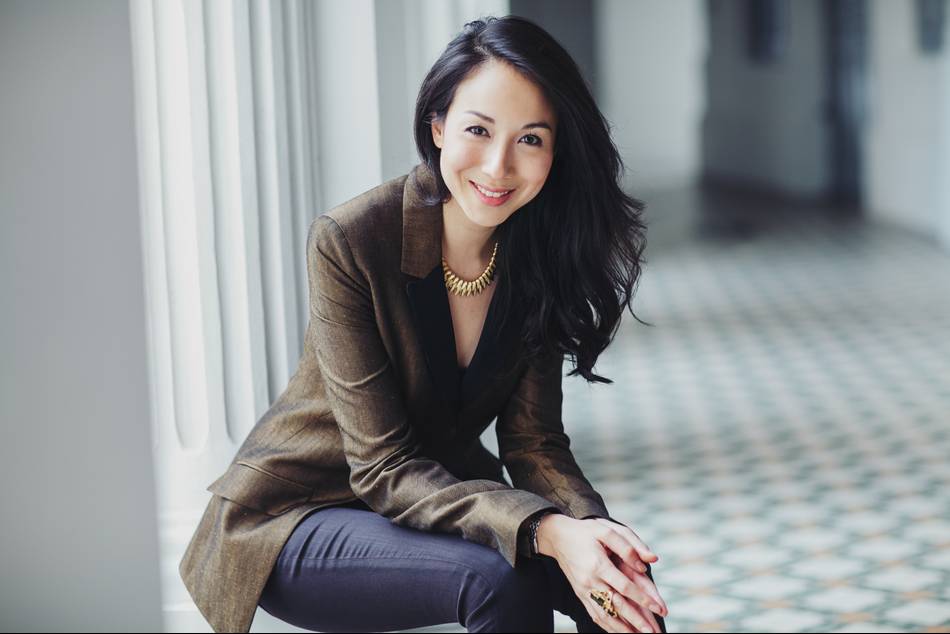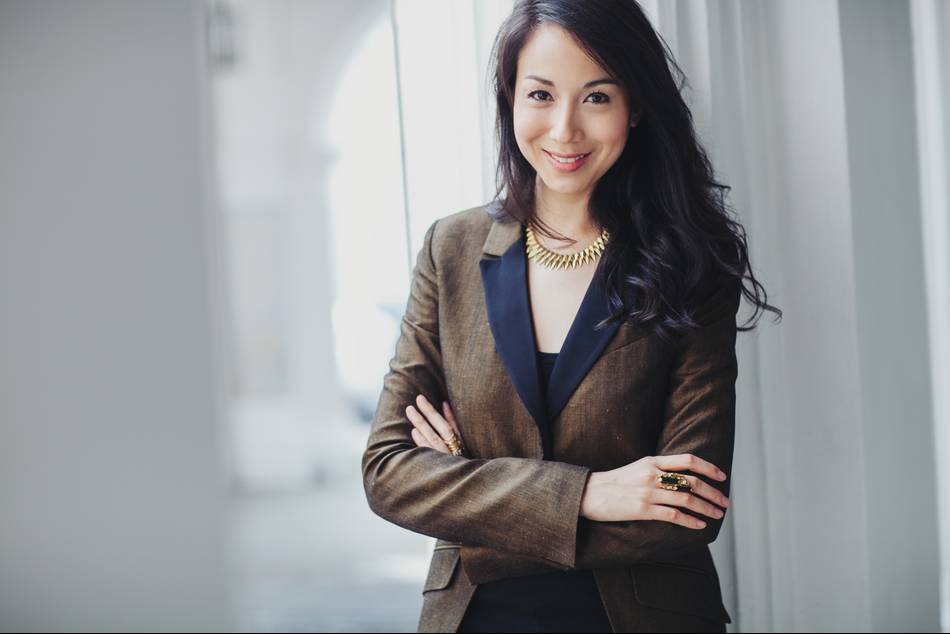Text by Kien M. Lee | Photos by Amanda Wong | Makeup by Parichat Naidu
She was the archetypal success story, graduating from a top school in London, Central Saint Martins in architecture, before starting a highflying career with renowned Iraqi-British architect Zaha Hadid.
With the invaluable experience under her belt, she went on to found her own architecture and interior design firm, T+, and it was during one of her projects that she discovered the lack of access to Asian contemporary art online, and thus The Artling was born.
Having just secured $200,000 in seed funding from an art collector, we speak to Talenia Phua Gajardo about her startup, its unique proposition and its future in the growing digital art space.
It looked like you were doing well with your design work. What made you want to start something new?
I started the Artling while I was still doing my interior design projects and it started to gain quite a bit of traction in terms of positive response, interest in the platform, artists and galleries signing up. I had to make a decision. I was bootstrapping, one person… and you have to choose a focus. Artling is (now) my main thing.
Congratulations on your funding! And you only started early last year?
We were founded last year and got funded in January this year. So technically the team is only half-a-year-old. We are aiming to raise our series A soon.

How many pieces of art, artists and galleries are currently being featured on your site?
Our inventory is in the thousands. We have over a hundred artists and over fifty galleries around Asia, from Japan, Thailand, Indonesia, Hong Kong. In terms of prominent galleries in Singapore, we work with STPI, Yeo Workshop, Silverlens and Mizuma Gallery, to name a few. We work a lot with the galleries at Gillman Barracks — it doesn’t get visited enough and we need to get more people to check them out. They have amazing relationships with their artists, they have really good programs and there's always amazing shows that are going on.
Regionally, we're fortunate enough to have partnered with galleries such as Nanzuka Gallery in Japan, Rossi&Rossi and GaleriePerrotin in Hong Kong.
So these galleries get their own profiles on your platform? Is that how you’ve cultivated a non-competitive environment?
Yes, we are neutral and are essentially the 'gallery-of-galleries' as such. We curate and select the galleries that we work with.
Are galleries able to choose what is featured?
We have a selection process based on what our clients like and what we think will "move" online.
What "moves" online?
Paintings and prints mostly. We also have sculptures, limited-edition prints, original paintings, photography and illustrations.
And the artists? Are they established? New or as yet unknown?
It’s a mixture of emerging and established artists. You'll find names like Murakami, Ronald Ventura and Eko Nugroho — those last two are big names in South East Asia for Philippines and Indonesia art. They are shown on a level playing field alongside emerging artists whom we believe have the potential to contribute to the Asian art scene in the coming years.
How much does the art cost?
The prices range from US$100 to US$10,000.

What kinds of buyers do you find coming to The Artling?
This varies - We have young collectors, first-time buyers, seasoned collectors and corporate clients. We have buyers that know specific artists that they’re looking for and they seek them out on our site. We also have buyers that know less about art but are keen to start their collection; the site is a great place to start.
We really want to encourage young collectors and to change the misconception that art is solely for the super-wealthy; It’s accessible and it's for everybody.
Besides the online site which has artworks available for direct purchase, we also offer private consultancy services where we work to our client's precise project specifications, whether in a corporate, hotel or residential setting. They will email us, send us their floorplans, their budgets, and then we suggest pieces for them. Sometimes they know which artists they are interested in and other times, it's up to us to recommend.
Whatever the collecting experience, we try to take our clients on a journey through art and provide as much information about the artist as possible. Education and research is important and crucial for the narrative of the artwork. Where is the artist from? What is their background? What are they trying to say with their work?
Do you see online art-buying trend growing or evolving?
Yes, definitely. Customers are getting more and more accustomed to shopping, bidding and sourcing for art online. It has changed so much in the last few years. There’s been a very big trend in art start-ups and we are seeing more and more platforms being built to serve this demand.
So they have more of a "catalogue" approach to things?
Some of them do.
The consultancy service is unique to us. Our network with the galleries allows us to bring the best artworks to our clients, providing a great range of options for all sorts of collectors. Our aim is to help nurture and celebrate the diversity of amazing artistic talent within Asia, and make it visible and readily accessible to an international market.
And that’s really how you’re different from the rest then?
Yes, our focus is on quality and not quantity. We invest time in trying to educate our customers where possible. We are very keen on collaborations and would like to try and support the local art scene whenever possible.

So were you always interested in art?
I went to Central St Martins in London which is an arts school. I studied architecture within an arts school which is completely different from doing architecture in a more traditional architecture school. We were constantly encouraged to mix with the different fields and there was a daily dialogue with other practices; product designers, fine art, media, animation, even with jewellery. It's great inspiration and exposure when you’re dealing with something as technical as architecture - That hybridisation and cross-fertilisation is something very unique.
What do you spend most of your time on?
It’s a mix of everything; managing the team, developing the site, sourcing for artworks for clients and projects, approving/disapproving artworks, visiting shows... I never do one thing. There’s ten things I do in a day.
So you managed to find time in your busy schedule to accept our invitation to the LA MER Spa experience at Tangs?
The day when I went to the spa, it was the most stressed I’d been in a month. I almost cancelled it. And I’m glad I didn’t.
It was amazing and extremely relaxing. The facial therapist was great - attentive but unobtrusive.
Did you try the LA MER Treatment Lotion? How did you find it?
I have very sensitive skin and it reacts to many creams/lotions; the Treatment Lotion is super light and also softens the skin, without any greasy residue.
The interview was brought to you by supreme luxury and transformative, high-performance skincare label LA MER, sold in more than 50 countries.
Launched in 2013, its new Treatment Lotion has already become a La Mer favourite, and it’s not hard to see why. Apart from being your daily energy source to ‘jump start’ skin’s natural renewal, the Treatment Lotion can also be used as a weekly skin treat to restore radiance and vitality to tired dull skin. Find out more at LaMer.com.sg













